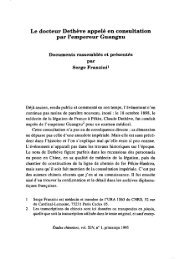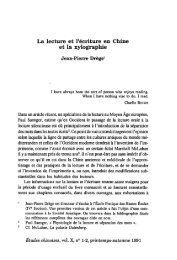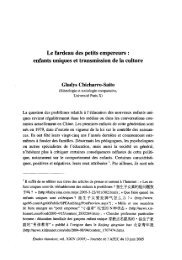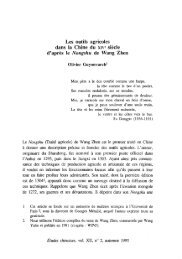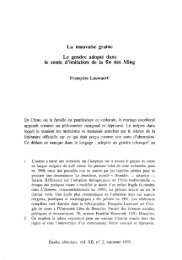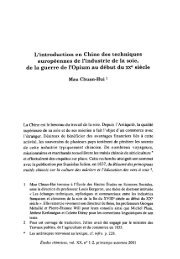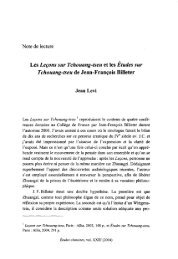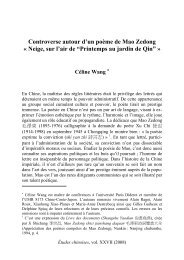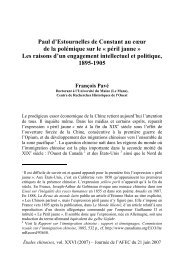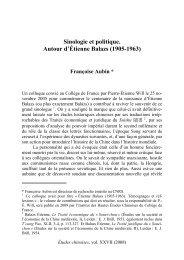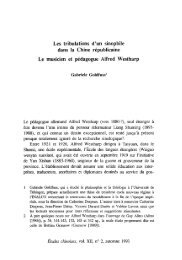Create successful ePaper yourself
Turn your PDF publications into a flip-book with our unique Google optimized e-Paper software.
Comptes rendus<br />
world (a perhaps debatable point, in view of the lack of reliable statistics);<br />
it was an intensely urban corner of a vast agrarian empire; and during the<br />
Ming period China was transformed into a Suzhou-centered world System.<br />
His book has the following chapters (I list only the subtitles, more<br />
informative): Introduction; 1. Suzhou and its hinterland in the Ming; 2.<br />
Suzhou to 1367; 3. Suzhou under Hongwu; 4. Suzhou, 1398-1430; 5.<br />
Suzhou from Zhou Chen to Wang Shu [1430-1484]; 6. Economy and<br />
society in fifteenth-century Suzhou; 7. Suzhou's élite and the rise of Wu<br />
School culture; 8. Suzhou, 1506-1550; Epilogue: Suzhou from the wokou<br />
crisis to the fall of the Ming; Conclusion. There are two appendices, one<br />
on population and one on examination graduâtes.<br />
In essence, Marmé's book is a socio-economic history of Suzhou<br />
during the first two Ming centuries, described mainly through the analysis<br />
of the state's tax structure and its conséquences in Suzhou préfecture. This<br />
largely économie approach is combined with a few chapters on society, in<br />
which a sample of patrilines is investigated in order to show how individual<br />
households experienced this history. Suzhou as an actual urban city is<br />
touched upon rather summarily: questions such as how the city related to<br />
the state apart from its tax structure, or how it was governed locally, are<br />
barely touched upon. For example, there is no discussion on the possible<br />
influence on governance of Suzhou's uncommon situation where one<br />
prefectural and two county yamens existed within its city walls, each with<br />
its own separate hinterland. Marmé ends his book when the first problems<br />
of the wokou pirates arise, and with the (in his view) concomitant beginning<br />
of urban social control by dahang gang members. In his conclusion,<br />
Marmé places Suzhou's early and mid-Ming history within a larger Ming-<br />
Qing framework, in which he again stresses the importance of particular<br />
state tax régulations that forced Suzhou to commoditize. Finally, Marmé<br />
concludes with a comparison of Suzhou's development with that of<br />
Europe's post-medieval cities: China is seen as a "proto-industrial," but<br />
not necessarily proto-capitalist imperium, since its élite did not seize control<br />
of, nor tried rationalizing the production process. In thèse comparisons<br />
between China and the West, Marmé on the one hand largely equates<br />
China's development with the Western model of "Smithean growth" (Le.,<br />
415



